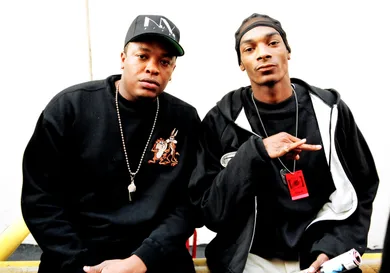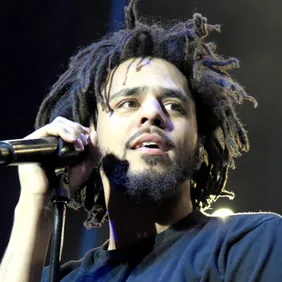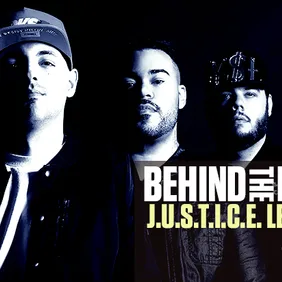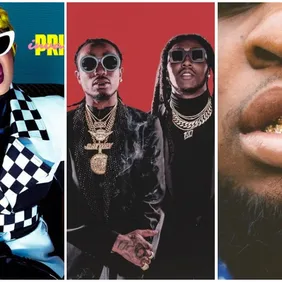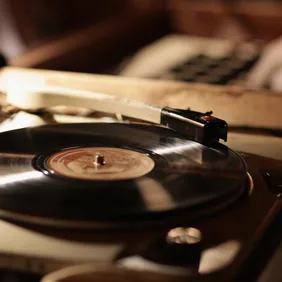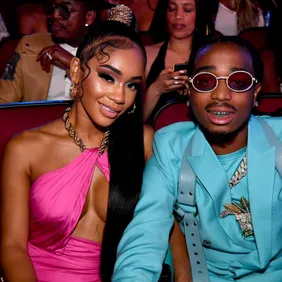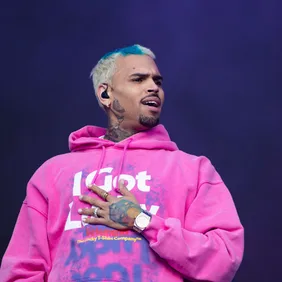During the early dawn of YouTube, before Jake Paul documented his childish antics, before Rebecca Black idolized Friday, and even before a double rainbow appeared like a miracle from the heavens over Yosemite Park, some blessed soul uploaded an informative video titled “ the world’s most sampled 6-second drum loop.” Since it’s arrival on the Tube, the video’s racked up over six million views and, for hip-hop heads and other music aficionados, it’s essential viewing. The eighteen-minute lesson narrated by the monotoned Nate Harrison maps out a captivating tale about how a sample from the 1964 song “Amen, Brother,” by The Winstons, signified itself not only as a musical phenomenon but a cultural one as well, finding itself sampled in both classic and modern hip-hop songs by artists such as N.W.A., Salt-N-Pepa, Lupe Fiasco, The Game, and Tyler, the Creator. It’s also made a name for itself outside of the hip-hop circle appearing in songs by Led Zeppelin, Nine Inch Nails, and the legendary David Bowie. As of 2016, the six second drum sample appeared in over 2,200 different songs and advertisements, easily crowning it the most sampled song in the history of music.
A good sample can keep a head bobbing through the chorus, while a great sample can transcend its former self, rebranding for a new generation. Wikipedia defines sampling as “the act of taking a portion, usually only lasting a few seconds, from one sound recording and reusing it as an instrument or a sound recording in a different song or piece.” It works as a Frankenstein-esque way of creating music; dissecting older pieces of music while reconstructing it as an entirely different beast or, in this case, an entirely different song, and it’s played a pivotal role in hip-hop and rap’s development since the genre’s conception. But sampling is risky business and, if done poorly, results in steep financial problems. Complications arise when artists forget, whether intentionally or not, about clearing a sample with the original recording artist which, usually, results in a lawsuit.
We once lived in a society where sampling existed as an ungoverned art form. Music acted more like a communal utopia, free from copyrights or restrictions. Once the artists gave their music to the public, it belonged to the public. The landmark 1991 lawsuit titled Grand Upright Music, Ltd. V. Warner Bros. Records Inc., however, changed everything. The halcyon days of free-for-all sampling came to a sudden halt. Obey or prepare yourself for a hefty payout, the courts insisted. As it was written, so it shall be done. From Ghostface Killah and RZA’s unlawful “Iron Man Theme,” to Mac Miller facing a ten-million-dollar lawsuit for an unlicensed Finesse sample on “Kool Aid and Frozen Pizza,” off his K.I.D.S. mixtape, numerous artists forked over serious cash after finding themselves on the wrong end of copyright litigations.
A 2008 Spin Magazine article listed the average price rates for a sample at $10,000, making it quite an expensive undertaking. High costs crippled the art form which forced producers into foraging new ways for creating that highly sought-after fire single. Enter 808’s, drum beats, and auto-tune. Beat-makers such as Timbaland and the Neptunes started crafting sample-free, and economic friendly, arrangements thus thrusting a stake straight into sampling’s expensive, but glorious heart. Although a handful of this year’s biggest hits were built around a strong sample (the flutes from Tommy Butler’s “Prison Song,” on “Mask Off,” Jennifer Lopez’s recycled “If You Had My Love,” chorus on Drake’s “Teenage Fever,”) there’s no arguing against the fact that the golden age of sampling has ended.
In remembrance, we listed below the fifteen greatest samples, not named “Amen, Brother,” in the history of hip-hop and rap. Debate in the comments with your favorites.
"Bad Things" by Cults
Before Cults etched their name into hip-hop history with their haunting piano beat and lead singer Madeline Follin’s mesmerizing melody from the song “Bad Things,” sampled on J. Cole’s hit 2013 single “She Knows,” they started their career as a humble New York City band whose first single, “Go Outside,” sent record labels into a mad signing frenzy during the winter of 2010. In the Name Of, an imprint of Columbia Records won the sweepstakes and released the band’s first album Cults during the summer of 2011.
Their band name, an almost sacred word rock n’ roll avoided for decades due to the catastrophic weight one associates with the title, might conjure up images of chaotic psychedelic music or heavy drone trance, but Cults surprises (whether good or bad) with indie-pop stylings overflowing with catchy lullaby-esque melodies dripping with sugar sweet naivety.
On “She Knows,” the fourth single from Born Sinner, J. Cole recognized the band’s endearing innocence and juxtaposed it against lyrics convicting the song’s narrator of infidelity. Cole spins a tale devoid of purity, one where the narrator walks a tight, almost manic line, paranoid about his girlfriend finding out about his monogamous failures. Cult’s haunting piano beat stalks the song’s central character like an impending dread one experiences right before their entire world crumbles right before their eyes.
Where Have I Heard that Song Before: “She Knows” by J. Cole featuring Amber Coffman
"I Got a Woman" by Ray Charles
A year after his death, Ray Charles entered hip-hop royalty. Kanye West’s “Gold Digger,” the second single released from the rapper’s Late Registration, skyrocketed to the top of the Billboard Top 100 where it stayed there for ten straight weeks. It cemented Kanye’s status as the genre’s brightest star and helped establish Jamie Foxx as a serious musical force. In 2014, the RIAA certified the single 5 times platinum.
But before Ray’s soulful voice sound tracked tales of money hungry women searching for love, “I Got a Woman,” enjoyed a successful career back when it was first released in 1954. This signature soul classic climbed to the top spot on the R&B charts and, a decade later, peaked at No. 79 on the Billboard 100 after a re-recording in 1965. It’s become a prime choice for covers with renditions coming from classic artists such as The Beatles, Elvis Presley, Roy Orbison, Booker T. and The M.G.’s, The Monkees, Stevie Wonder, Sammy Davis Jr., and Johnny Cash. Rolling Stone Magazine even ranked it No. 239 on their 500 Greatest Songs of All Time list.
But a great song can reach immortality in the right hands, and when the “I Got a Woman,” finally landed into the hands of Jon Brion and Kanye West, soon after the turn of the new millennium, it did exactly that. “Gold Digger,” is a stunning crossover hit with worldwide appeal. A young and hungry Kanye spins a relatable tale which never indicts the femme fatale but, instead, gives an almost appreciative nod at the lifestyle while Jamie Foxx officially clams himself as the heir to Ray Charles’s throne a year after winning an Oscar with a portrayal of the soul king in the film Ray. Get down, Jamie, go ahead and get down.
Where Have I Heard that Song Before: “Gold Digger” By Kanye West featuring Jamie Foxx
"I Got The..." by Labi Siffre
In a year where U2 won Record of the Year for “Beautiful Day,” and Steely Dan won three Grammy’s, including Album of the Year for Two Against Nature, the only relevant moment during the outdated and old-fashioned 43rd Annual Grammy Awards was a live performance of the critically acclaimed single “Stan,” by Eminem with help from Elton John. The performance made headlines and dominated water-cooler conversation the next morning because, at the time, a large group of people were convinced that Eminem was a homophobic. So much so, in fact, GLAAD, the Gay and Lesbian Alliance Against Defamation, picketed outside the Stapes Center, the venue hosting the Grammy’s, protesting Eminem’s inclusion into that year’s ceremony. It was a shocking moment in pop culture history, but those following Em’s career shouldn’t be too surprised considering one of his most well-known singles contains a sample by Labi Siffre, an openly homosexual singer-songwriter and poet.
The song, “I Got The…”, starts off as a fast, funky, jazz-infused record which depicts a man’s descent into lonely madness before a woman, his savior, relieves him from his depression. It’s a driving jangle before it pulls a 180 nearly two and a half minutes into the song. A bouncy keyboard takes over sending the song soaring into previously unspeakable heights, resembling The Beatles at their grooviest.
It’s an anomaly of a record which found itself sampled on “Streets is Watching,” by Jay-Z, “Kaleidoscope Dream,” by Miguel, “No Hook,” by Shaquille O’Neal featuring Method Man and RZA and over twenty more songs. Crossing genres, even the British psych dance rock band Primal Scream sampled the jam on their landmark 2000 album XTRMNTR. But it’s Eminem’s “My Name Is,” which remains the song’s crowning sampled achievement. An achievement which almost never came to pass.
Before clearing the sample, Labi Siffre insisted Eminem scrap the lyrics “My English teacher wanted to have sex in junior-high. The only problem was, my teacher was a guy.” He felt the lyrics were offensive, an unnecessary and lazy snip at the gay community. Marshall Mathers agreed so Siffre granted him and Dr. Dre the sample. Now that’s solidarity.
Where Have I Heard That Song Before: “My Name Is” by Eminem
"Try A Little Tenderness" by Otis Redding
Otis Redding wasn’t even alive when Jimmy Campbell, Reg Connelly, and Harry Woods wrote “Try A Little Tenderness,” back in 1932. First recorded by the Ray Noble Orchestra, the song, which hints at a simple trick a man can use to get women into bed, became a staple in the American songbook with Brat Pack alumni Sammy Davis Jr. and Frank Sinatra both taking turns covering the classic croon song as well as Bing Crosby. An instrumental version even played over the opening credits of the Stanley Kubrick film Dr. Strangelove. But it wasn’t until 1966, after the tune landed into the hands of Otis Redding, when the song truly discovered its groove. Redding revamped the entire structure of the song and crafted a R&B classic slow-burn with an unforgettable climax. The song resonated with the times and became one of Redding’s most well-known hits.
When Kanye West and Jay-Z announced their collaborative album Watch the Throne, a frenzied hype train immediately blossomed. Fresh off releasing My Beautiful Dark Twisted Fantasy, many considered Kanye at the absolute peak of his powers. Jay-Z, whom critics once crowned the best in the game, was showing signs of slowing down but still sometimes wowed with flashes of brilliance. The album would mesh two of the greats at two radically different points in their career. The lines between master and student were blurred as they now stood side by side. But they needed a fire, radio-ready first single to give the album the bombastic introduction it desired.
First single, “H.A.M.,” didn’t exactly deliver on the album’s promise, it was a forgettable and goofy track which didn’t make much of a dent on the airwaves. Yet, just as audiences began writing off the super group, Ye and Jay released “Otis.” Produced solely by Kanye, he gives Otis Redding the first thirty-five seconds of the song all to himself before West and Jay-Z trade verses about the luxurious lives they live. It’s not easy sampling one of the greatest songs of all time and making it all your own, but Ye and Jay do exactly that.
Where Have I Heard That Song Before: “Otis” by The Throne (Kanye West and Jay Z.)
"Why Can't We Live Together" by Timmy Thomas
What’s most striking about “Why Don’t We Live Together,” is how everything sounds so empty. Recorded in mono and released in 1972, this slow-burning funk protest jam features a desperate Timmy Thomas wondering why he and his fellow man can’t live together. Musically, only a Lowrey Organ and minimal percussion produced with an early model rhythm machine back up his passionate vocals. The simplicity of it all creates a stoned solitude where Thomas meditates on war and humanity.
When “Hotline Bling,” dropped into the music realm back in the summer of 2015, it was welcomed with a sigh of relief. It’s the third in a trilogy of singles Drake released for free on Soundcloud that summer, with the previous two serving as diss tracks aimed at maiming Meek Mill’s (and almost succeeding) rap career. “Hotline Bling,” didn’t dish out any finishing blows, however, it presented Drake as someone whose hurt and hoping his ex-girlfriend calls him on his cell-phone. Spoiler alert: she doesn’t.
Much like Thomas, Drake also wonders why he and someone special doesn’t live together, but instead of focusing on the entirety of humanity, he narrows downs Thomas’s vision into a singular person. The emptiness of the beat imagines Drake all alone with his feelings. Aubrey capitalized on the dog days of summer release with a sweaty single cloaked in tropical dreams and it immediately struck a note with pop culture. The song reached No. 2 on the Billboard 100 Charts, his highest placement at the time.
Drake wasn’t the first artist who sampled Thomas’s protest song. M.C. Hammer did it back in 1991 as well as nearly twenty-five other artists, but “Hotline Bling,” stands alone as not only a worthy companion to “Why Don’t We Live Together,” but also, perhaps, a shining successor. Because in the year 2017 and beyond, whenever we hear those sparse drums blast through our radio speakers that can only mean one thing.
Where Have I Heard That Song Before: “Hotline Bling” by Drake
"The Big Beat," by Billy Squier
The “Big Beat,” introduces itself with a massive drum beat with stadium sized aspirations. Little did Billy Squier know, when crafting this uncharted 1980 song, the song would live in infamy not in stadiums, but in night clubs almost forty years later.
Besides this legendary beat, which burst onto the sampling universe when Run D.M.C. sampled the song 1983’s “Here We Go (Live at the Funhouse),” followed by appearances in some of the genre’s most influential artists including Jay-Z (“99 Problems”), Puff Daddy (“Can’t Nobody Hold Me Down,”), Kanye West and Pusha T (“Looking for Trouble”), A Tribe Called Quest (“We Can Get Down”), Dizzee Rascal (“Fix Up, Look Sharp”) and over 250 more tracks, Billy Squier and hip-hop don’t have much in common. Instead of dingy clubs located in fringe areas throughout the city, Squier, instead headlined stadiums, playing to crowds towering over thousands of people. He wore skin tight jeans and, by the looks of it, spent hours in front of the mirror. Nevertheless, “The Big Beat,” solidifies his place amongst hip-hop royalty. Years down the road, people will continue listing the genre’s greatest samples, and “The Big Beat,” will always again find a way onto the list. Now that’s pretty hood, Billy Squier.
Where Have I Heard That Song Before: “99 Problems” by Jay-Z
"Juicy Fruit" by Mtume
Released as the first single off Mtume’s third album, this song ruled airwaves years before entering hip-hop’s lore. The 1983 single reached number one on the Billboard Hot Black Singles chart and cruised there for eight straight weeks. Before the year ended, the single moved over a million units.
But instead of drifting into a sea polluted with countless other forgotten 1980’s singles, it found new life when Notorious B.I.G. sampled the song for his debut single “Juicy.” Although the sample officially rips from the “Fruity Instrumental” mix, and the girl group Tidal replace the lead singer’s vocals, “Juicy,” retains the original song’s silky groove. Solidifying his status as rap’s newest force, Biggie raps about how he’s blowing up like we thought he would. His lyrics present him as a wide-eyed rookie ready for whatever comes his way. It’s recognized today as not only one of the greatest debut tracks of all time, but also one of hip-hop’s greatest songs period.
Besides reclaiming fame with B.I.G., “Juicy Fruit,” remains a sample goldmine featured in over eighty songs from artists such as R. Kelly (“Freak Tonight”), Keyshia Cole (“Let it Go”), and Tamar Braxton (“The One”). Twenty-four years after its initial release, “Juicy Fruit,” doesn’t lose its flavor.
Where Have I Heard That Song Before: “Juicy” by Notorious B.I.G
"Didn't I" by Darondo
Hailing from the San Francisco Bay area, Darondo’s “Didn’t I,” swirls in and out of consciousness like a morning ocean breeze seeping in through a screen door. The song drifts along as Darondo ponders why his lover has left him. He’s cycling through his memory bank with a confident demeanor knowing he did everything he possibly could for her to stay. In the end, it was out of his hands. Although the song bounces along with a happy-go-lucky demeanor, there’s a certain earnestness with the lyrics and Darondo’s raspy, hurt voice. It contrasts brilliantly with the heavy rumors circulating back in the 1970’s regarding Darondo’s second gig as a pimp.
The heart-broken pimp persona resonated with modern audiences and Dorando has posthumously witnessed a resurgence in popularity nearly four years after his death. Back in 2015, Big Sean copped “Didn’t I,”’s jangly guitar riff for the last song off Dark Sky Paradise, “Outro.” It’s a moveable dance track inspired more by Dorando’s coolness than the actual lyrics.
Vic Mensa, however, channeled both the song’s inherent groove along with emotional undertones for 2017’s cleverly titled “Say I Didn’t,”. He chants along with the song’s famous question while also using the laid-back beat as he boasts about his recent financial success. However, by the song’s final verse, the sample’s emotional undertones cause him to reminisce about his past, specifically his family. He doesn’t reach out towards his parents as often as he should, and, in retrospect, his old man wasn’t as bad as he once seemed. It’s an affecting moment lifted even higher with the use of a memorable sample.
Where Have I Heard That Song Before: “Outro,” by Big Sean/ “Say I Didn’t,” by Vic Mensa
7. "Holy Thursday" by David Axelrod
If some genius ever took their time and constructed a Mount Rushmore type monument dedicated to the grandfathers (and grandmothers) of sampling, the ones who wrote the original songs which hip-hop would base their genre around, David Axelrod would surely find his face etched in stone. But he wouldn’t be George Washington, that distinction belongs to James Brown. Nor would he be Abraham Lincoln, honest Abe would be portrayed by the Winstons. But he could possibly be Thomas Jefferson.
David Axelrod, a composer and producer who combined elements of jazz and R&B, existed in relative obscurity for most of his career until the early nineties when artists such as DJ Shadow and Lauryn Hill began discovering his work. He’s been sampled over 400 times and even composed the arrangement for David McCallum’s “The Edge,” famously sampled by Dr. Dre for “The Next Episode.” There’s a countless number of excellent tracks which could fit into this spot, but we’re partial to “Holy Thursday.”
First appearing on Songs of Innocence, a 1968 album inspired by the poems of William Blake, “Holy Thursday,” is a five-and-a-half-minute psychedelic journey complete with strings and chimes. It’s a Be Here Now meditation overflowing with mysticism and the supernatural. It appears in over twenty songs including “Righteous Minds,” by Joey Bada$$, “Bronx Keeps Creating It,” by Fat Joe, and “Think Twice,” by INI and Pete Rock. But, undoubtedly, the sample belongs to “Dr. Carter,” by Lil Wayne.
Featured on “Dr. Carter,” off Wayne’s monster 2008 album Tha Carter III, the song creates an entertaining metaphor where Wayne plays a doctor in charge of bringing struggling rapper’s career back to life. Although his first two patients die on the hospital bed, he succeeds in resuscitating the third invalid. Whether he’s rapping nonsense or he’s creating a metaphor about the entire genre is anyone’s guess, but it’s a standout track among an album overflowing with massive, career defining moments. David Axelrod, who died earlier this year, smiles from his mountain.
Where Have I Heard That Song Before: “Dr. Carter” by Lil Wayne
"The Grunt" by The J.B.'s
A sampler’s holy grail. This unhinged funk instrumental production credits James Brown but the track’s true power lies with his infamous backing band, The J.B.’s. Together, the band creates a blissed-out funk monster primed for the weekends.
The song features a blistering tenor saxophone performance by Robert McCollough who goes down in the hip-hop record books with two classic samples: a double-note riff occurring at the :57 second mark, and the infamous opening glissando which announces the groove’s arrival with a maniacal squeal.
Public Enemy sampled the shit out of this squeal on the essential It Takes a Nation of Millions to Hold Us Back. Three different tracks including “Terminator X to The Edge of Panic,” “Night of the Living Baseheads,” and “Rebel Without a Pause,” contain this iconic glissando which helps create the album’s paranoid vibe. The Wu Tang Clan used it on “Protect Ya Neck,” Pete Rock & C.L. Smooth cops it for “Soul Brother #1,” and Pharcyde uses it on “Officer.” In total, the track’s racked up over 200 credits solidify its place among the sampled greats.
Where Have I Heard That Song Before: “Rebel Without a Pause” by Public Enemy
"Genius of Love" by the Tom Tom Club
“There is no beginning and there is no end,” sings Tina Weymouth midway through this 1980’s dance track, and she’s right. When The Tom Tom Club, a Talking Heads spin-off group, announced their arrival, they knew it would take a memorable song to free themselves from the looming shadows of their predecessors, and they delivered with “Genius of Love,”
With an airy vocal performance by Tina Weymouth, “Genius of Love,” introduces itself as a naively sweet pop song concerned only with the narrator’s lucky boyfriend. It’s a beat driven song which loops forever. A dance floor ready track primed for sampling, and the band must’ve known it. Towards the end of the track, they repeatedly shout out James Brown, the king of sampled artists.
Whether it’s the original, or any of its numerous incarnations, the infectious and instantly memorable beat keeps dance floors moving even in the year 2017. It still sounds fresh and nostalgic all at once without aging a day. Its sampled in over 140 songs including “It’s Nasty (Genius of Love),” by Grandmaster Flash and The Furious Five, “High Speed,” by 2Pac, and “Fantasy,” by Mariah Carey.
Where Have I Heard That Song Before: “It’s Nasty (Genius of Love)” by Grandmaster Flash and The Furious Five
"Funky Drummer" by James Brown
Not only the Godfather of Soul, but also the reigning Godfather of sampled music. James Brown’s influence on the hip-hop community deserves an entire list could devoted to samples from his songs. He’s been sampled on almost seven thousand different occasions, far more than any other single artist. But “Funky Drummer,” reigns supreme as his most sampled song. Even though the infamous break beat arrives late in the song (Brown introduces the Clyde Stubblefield’s drum beat somewhere around the 5:34 mark with a countdown) it carries enough funk and rhythm to last for years.
Stubblefield’s break beat helped build hip-hop. It’s appeared in over 1,400 songs including genre staples such as “Fight the Power,” “Bring the Power,” and “Rebel Without A Pause,” by Public Enemy, “Run’s House/Beats to the Rhyme,” by RUN DMC, and “Lyrics of Fury,” by Eric B. and Rakim. It’s also been used in tracks by various rap legends including Biz Markie, NWA, De La Soul, 2 Live Crew, and DJ Jazzy Jeff and The Fresh Prince. If hip-hop’s future is as funky as it’s past, then expect the drum break to continue filling beats for years to come.
Where Have I Heard That Song Before: “Fight the Power” by Public Enemy
"Footsteps in the Dark" by The Isley Brothers
“Are we really sure, can a love that lasted for so long still endure?” The Isley Brothers humbly ask on “Footsteps in the Dark,” a non-single from their double platinum album Go for Your Guns. The 1977 solemn, slow jam gained traction with its laid-back beat and syncopated drum riff, a perfect baby-making tune, but it’s narrative speaks about a crumbling relationship, destroyed by infidelity, with the singer pleading for his lover to stay.
Compton’s Most Wanted first deemed the song sample worthy on their 1991 track “Can I Kill It?”, but it’s most known as the driving force behind Ice Cube’s breakthrough single “It Was a Good Day.” The single reached number seven on the Billboard Hot R&B/Hip-Hop Songs, and was ranked number 28 on VH1’s 100 Greatest Hip-Hop Songs.
“It Was a Good Day,” celebrates a classic day in South Central, Los Angeles where Cube wakes up without the neighbor’s dogs barking, he records a triple-double at the local park, and gets a much-awaited phone call from his new crush. Plus, most importantly, nobody he knows got killed and he didn’t have to use his AK-47. A rare peaceful day on the eve before the L.A. riots shook the city.
Where Have I Heard That Song Before: "It Was a Good Day" by Ice Cube
"Strange Fruit" by Nina Simone
Abel Meeropol wrote the poem “Strange Fruit,” in 1937 as a rallying cry against the unlawful lynchings of African Americans. Recorded and released by Billie Holiday a few years later, the song exists as an essential rallying cry against the horrors of slavery. The track succeeds with rich, glaring imagery as the song’s narrator relates the hanging fruit of a tree to those unfortunate, and innocent victims of lynching. Time Magazine named it the “Greatest Song of the Century,” and The Library of Congress added it to their National Recording Registry in 2002.
Although a variety of artists took their chance at recording this timeless classic, from Jeff Buckley to new-wave act Siouxsie and the Banshees, it’s Nina Simone who truly captures the song’s essence. With absolutely no disrespect towards Billie Holiday, Simone’s bold and fiery vocal chords creates an altogether more dramatic performance. Dodging any potential overt sentimentality, Simone conquers with an almost muted musical song which lets Simone use her voice as her most powerful companion. It’s all she has in the war against racism and slavery.
When word spread about Kanye West sampling the song on his Yeezus album, many suspected he would keep in line with the song’s original context and release a protest song. This was, after all, the man who infamously claimed on live television that the 43rd president of the United States of America doesn’t care about black people. Yet, foregoing the song’s political climate, Kanye, instead, used Nina Simone’s broken voice and the lyric’s images and backdropped it against a crumbling modern relationship poisoned with Instagram hashtags, “second-string bitches,” and a remembrance of better days spent taking Molly. The song’s immediacy and masterclass in sampling even caught the attention of art-house resident weirdo director David Lynch, who said “I think it’s one of the most modern pieces and so minimal, so powerful but at the same time so beautiful.” Same here, David, same here.
Where Have I Heard That Song Before: "Blood on the Leaves" by Kanye West
"The Edge" by David McCallum
It’s one of the most iconic and recognizable intros in the history of music. Opening with a bang of thunder and a quick but menacing build “The Edge,” catches the listener off guard before sending them into a flute driven jazzy strut down the yellow brick road. Recorded and released by Capitol Records in 1967, David McCallum teamed up with producer and King of Sample ready music, David Axelrod, for “The Edge,” an instrumental arrangement with cinematic aspirations. Axelrod, who probably at the time wasn’t thinking about how his recordings were going to help mold some future musical movement decades down the line, arranges a larger than life larger than life introduction which seemed primed and ready for hip-hop mythology.
Over the years, “The Edge,” has found itself sampled on nearly 30 different tracks. Kevin Gates copped it back in 2013 for “Just Ride,” Quasimoto used it on “Talkin’ Shit,” and Missin Linx sampled it for “M.I.A.” Even Brittany Spears’ ex-husband, Kevin Federline, somehow convinced himself he should use it on his 2006 properly titled song “America’s Most Hated,” but all of these artists only use this sample as an homage to rap royalty, because there’s no way their song will conquer “The Next Episode,” by Dr. Dre and it’s use of “The Edge,” a perfect marriage enshrined in the annals of hip-hop.
Borrowing the original’s attention-grabbing introduction, “The Next Episode,” features Dr. Dre and Snoop Dogg at their finest forms rapping against the click-clack guitar from “The Edge,’ and one of Dre’s most satisfying beats.
“The Next Episode,” is as Los Angeles as it gets. This is the 405 on a Friday night. Close your eyes and you can feel mist from the Pacific Ocean as you cruise down the Pacific Coast Highway heading back to South Central after a Saturday afternoon at the Santa Monica Pier. You hear the opening introduction on the radio and you don’t know if it’s the original or Dre’s version but either way it doesn’t really matter. Both are great songs. You lean back a little further than legally allowed, crank up the radio’s volume just a few more notches, and nod along to those catchy as hell guitars.
Where Have I Heard That Song Before: "The Next Episode" by Dr. Dre featuring Snoop Dogg
